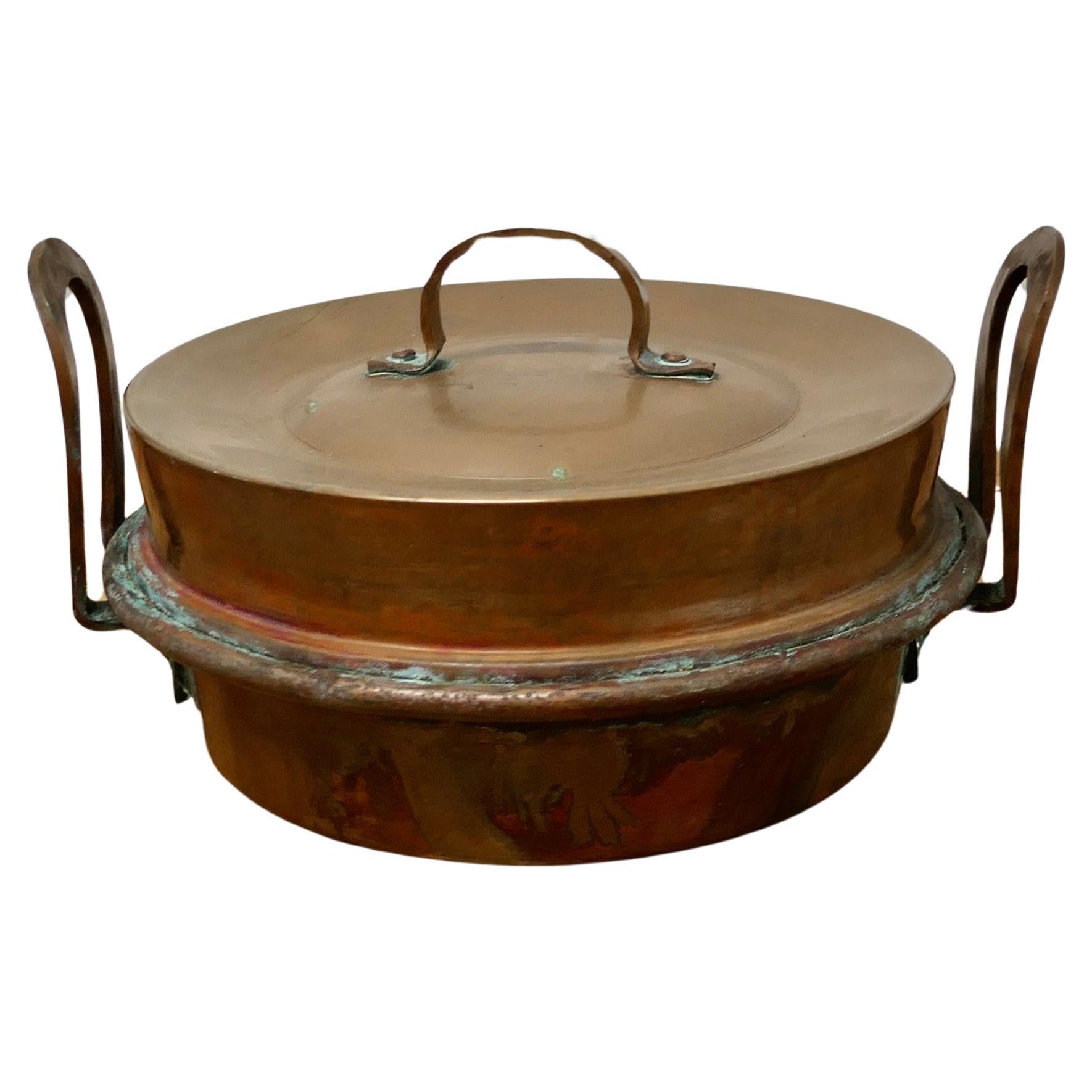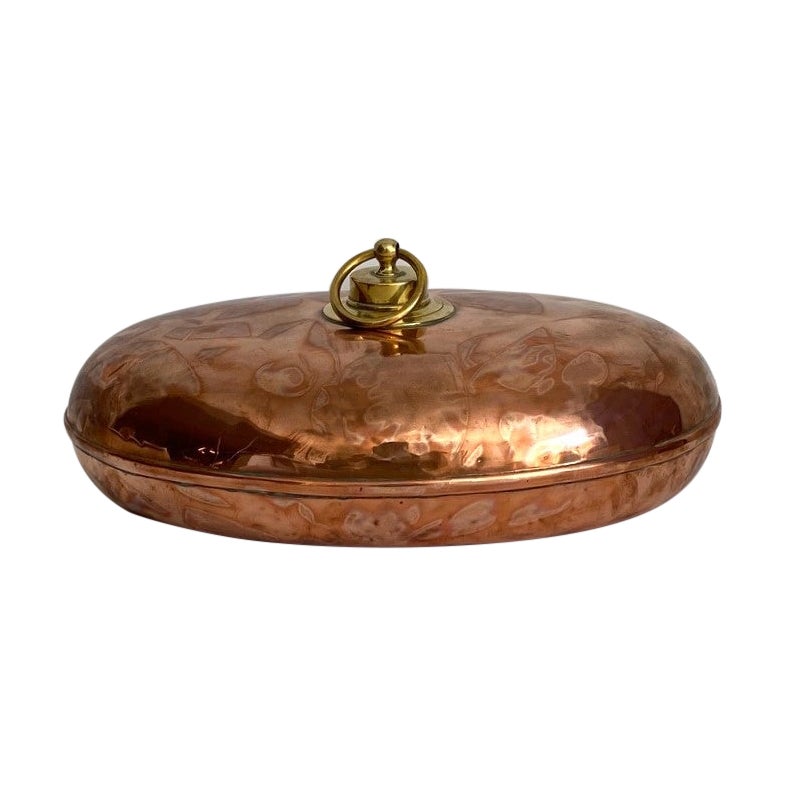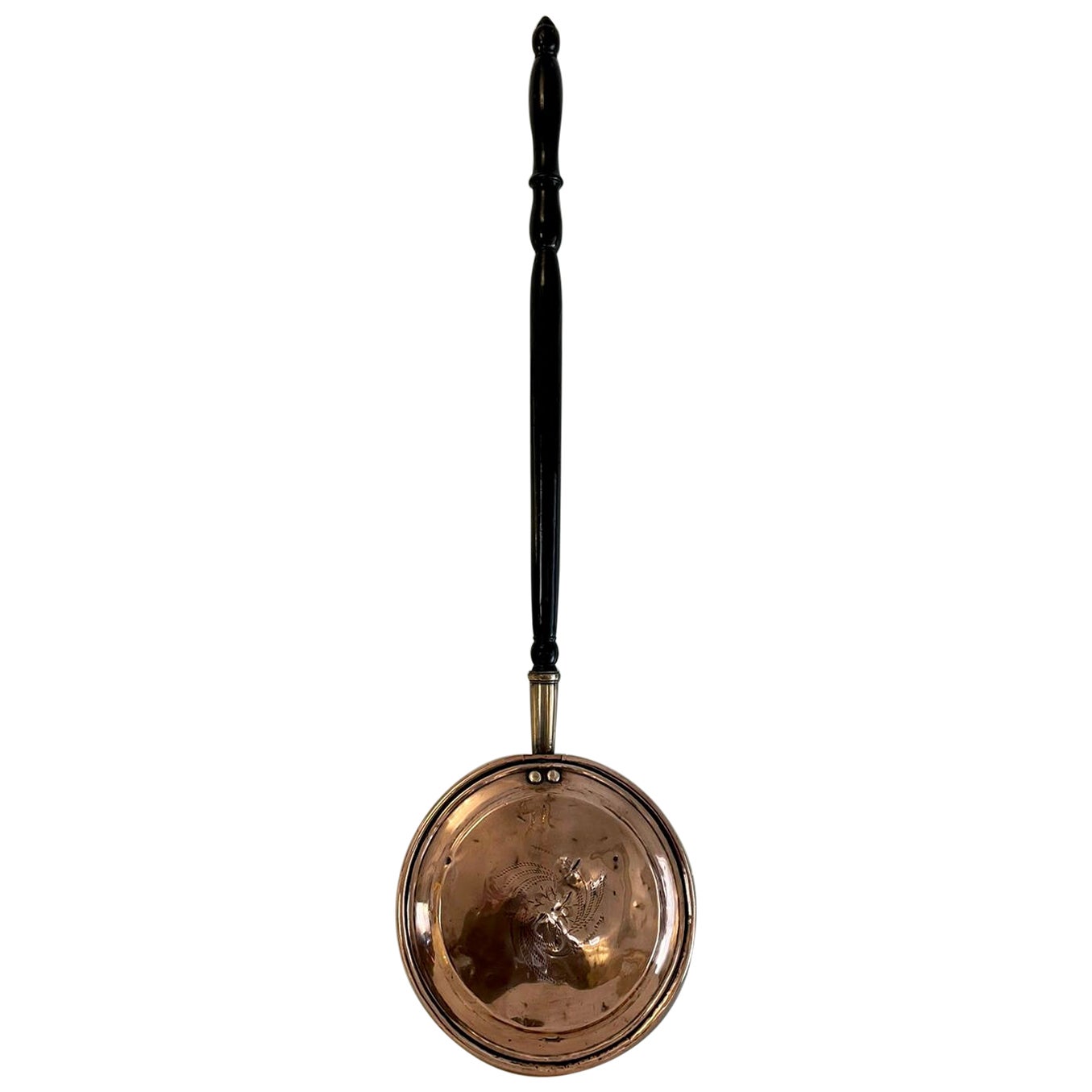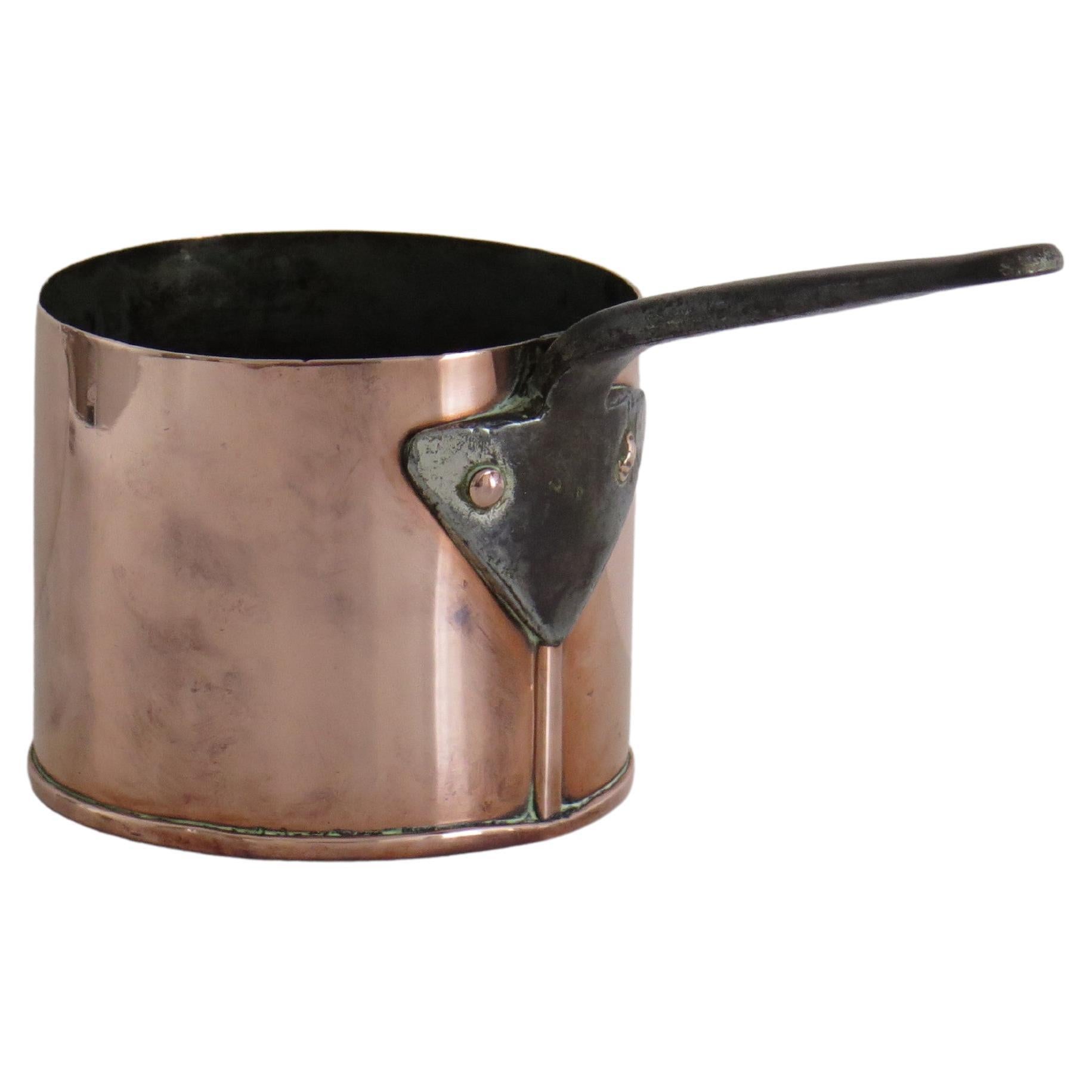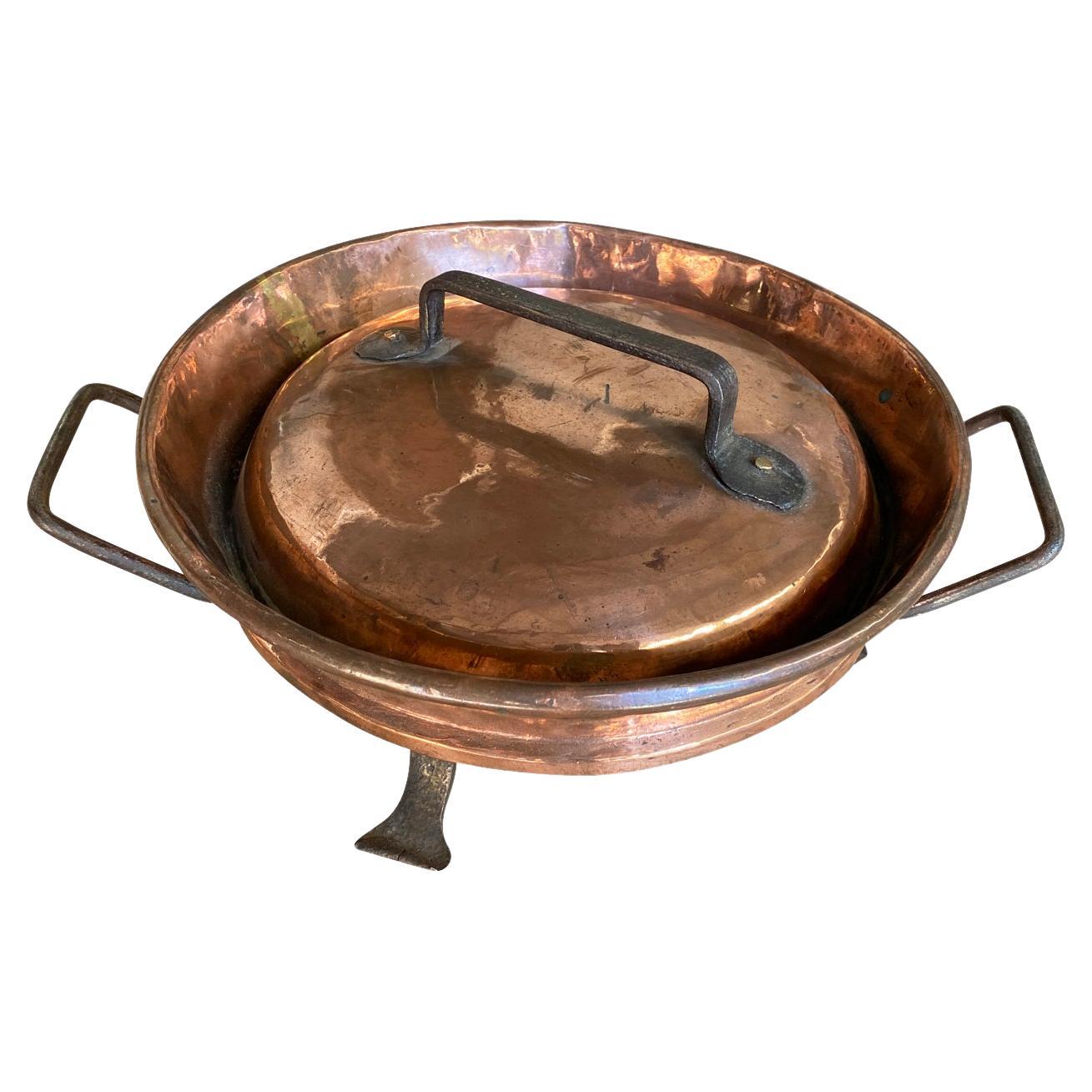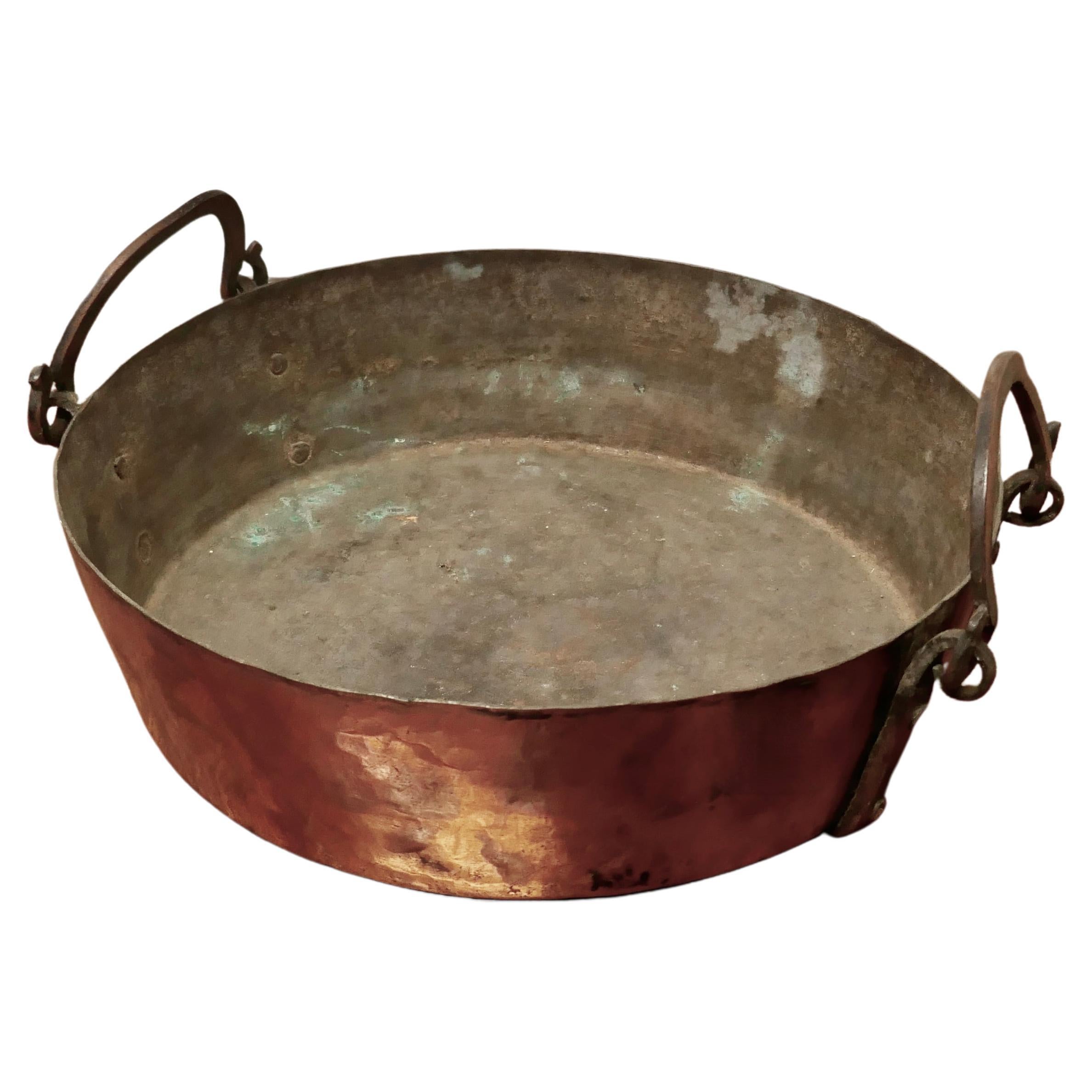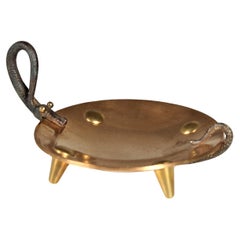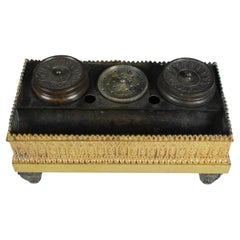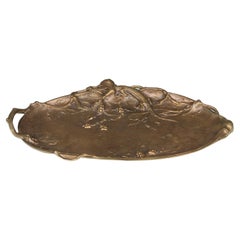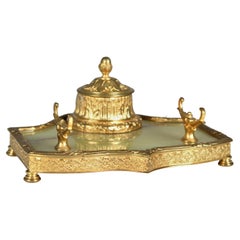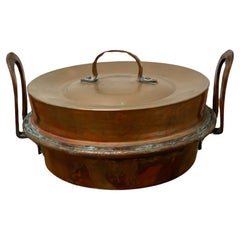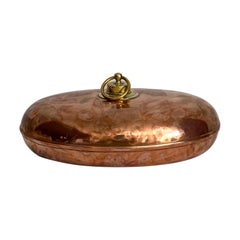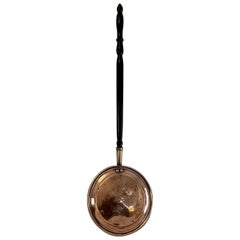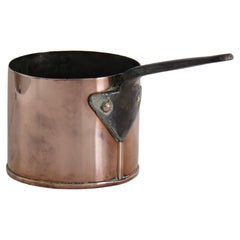Items Similar to Antique Bassinoire, Warming Pan, Copper, France, 1880s
Want more images or videos?
Request additional images or videos from the seller
1 of 12
Antique Bassinoire, Warming Pan, Copper, France, 1880s
$371.75
£276.54
€310
CA$509.05
A$565.99
CHF 295.53
MX$6,889.48
NOK 3,770.82
SEK 3,533.08
DKK 2,359.86
Shipping
Retrieving quote...The 1stDibs Promise:
Authenticity Guarantee,
Money-Back Guarantee,
24-Hour Cancellation
About the Item
Beautiful copper pan from France, a so-called Bassinoire.
The lid can be opened with an external lever.
This antique form of a todays hot-water bottle was primarily used in aristocratic homes in the 18th and 19th centuries.
Hot coals were poured into the container and then placed in bed to warm up.
This warmer has a beautiful decorative lid.
- Dimensions:Height: 3.55 in (9 cm)Diameter: 9.45 in (24 cm)
- Materials and Techniques:
- Place of Origin:
- Period:
- Date of Manufacture:Circa 1880
- Condition:Nice and cleaned condition with signs of age and use.
- Seller Location:Greven, DE
- Reference Number:1stDibs: LU5419237668432
About the Seller
4.9
Platinum Seller
Premium sellers with a 4.7+ rating and 24-hour response times
Established in 2014
1stDibs seller since 2020
190 sales on 1stDibs
Typical response time: <1 hour
- ShippingRetrieving quote...Shipping from: Münster, Germany
- Return Policy
Authenticity Guarantee
In the unlikely event there’s an issue with an item’s authenticity, contact us within 1 year for a full refund. DetailsMoney-Back Guarantee
If your item is not as described, is damaged in transit, or does not arrive, contact us within 7 days for a full refund. Details24-Hour Cancellation
You have a 24-hour grace period in which to reconsider your purchase, with no questions asked.Vetted Professional Sellers
Our world-class sellers must adhere to strict standards for service and quality, maintaining the integrity of our listings.Price-Match Guarantee
If you find that a seller listed the same item for a lower price elsewhere, we’ll match it.Trusted Global Delivery
Our best-in-class carrier network provides specialized shipping options worldwide, including custom delivery.More From This Seller
View AllAntique Vide Poche, France, 1920s, Snake Bite
Located in Greven, DE
Exceptional vide-poche with a snake as a holder.
Can be wonderfully used for storing small objects on the desk or as a jewelry tray.
Category
20th Century Unknown Antiquities
Materials
Brass
Antique Inkwell, Bronze D´oré, Desk Utensil, Neogotic, circa 1850
Located in Greven, DE
Antique inkwell from gilded brass.
France, 1840-1860.
Category
Antique Mid-19th Century French Inkwells
Materials
Gold, Brass
$305 Sale Price
50% Off
Antique Jewelry Tray, Art Nouveau, Gilded Bronze
Located in Greven, DE
Beautiful jewelry tray, Art Nouveau.
Category
Early 20th Century Unknown Desk Sets
Materials
Bronze
Antique Inkwell, Gilded Bronze, Antique Desk Utensil, Pen Holder, circa 1880
Located in Greven, DE
Beautiful antique inkwell made from gilded bronze.
circa 1880.
The plate is made of marble.
Nice bronze work with a well preserved gilding.
The original glass insert is existing....
Category
Antique Late 19th Century Unknown Inkwells
Materials
Marble, Gold, Bronze
Early 19th Century French Ormolu Bronze Inkwell
Located in Greven, DE
Empire Inkwell on Circular Base
Origin: France
Material: Gilt bronze (Ormolu)
Date: Circa 1800–1810
Dimensions:
H × D: approx. 16 × 19 cm
Description:
Classical-style inkwell in t...
Category
Antique Early 19th Century French Inkwells
Materials
Bronze
Antique Inkwell, Gilded Bronze, Antique Desk Utensil, Vase-Shaped, Pen Tray
Located in Greven, DE
Antique inkwell made from bronze, gilded.
Very good condition of the bronze work.
Category
Antique Late 19th Century French Inkwells
Materials
Gold, Bronze
You May Also Like
Round 19th Century Copper Steaming or Warming Pan with Lid
Located in Godshill, Isle of Wight
Round 19th Century Copper Steaming or Warming Pan with Lid
This is a lovely looking 19th Century Pot it has a wide rim so that it can be suspende...
Category
Antique 1850s Victorian Serving Pieces
Materials
Copper
19th Century Copper Bed Warmer
Located in Pomona, CA
19th-century copper bed warmer with a brass cap.
Category
Antique 19th Century English Planters, Cachepots and Jardinières
Materials
Brass, Copper
Antique George III Quality Copper Warming Pan
Located in Suffolk, GB
Antique George III quality copper warming pan having a quality original turned handle with a circular copper warming pan with an engraved lift up lid
H 10...
Category
Antique Early 19th Century English George III Serving Pieces
Materials
Copper
$323 Sale Price
20% Off
Antique solid Copper Pan, French 19th Century
Located in Lincoln, Lincolnshire
This is a hand made small copper pan with a forged iron handle, probably French and dating to the mid 19th Century.
The pan is well made with soldered seams and joints. The handle i...
Category
Antique Mid-19th Century English Arts and Crafts Serving Pieces
Materials
Copper, Iron
French 18th Century Copper Tortiere
Located in Round Top, TX
A charming 18th century Tortiere from the Southwest of France. This handsome piece is crafted from heavy gauge copper raised on feet with its lid. Tortieres were used to prepare an...
Category
Antique 18th Century French Serving Pieces
Materials
Copper
Fine Quality 19th Century Copper Roasting Pan
Located in Godshill, Isle of Wight
Fine Quality 19th Century Copper Roasting Pan
This is a lovely looking 2 Handles Pan, the pan was obviously a very treasured piece, it has bras...
Category
Antique Early 19th Century Georgian Decorative Dishes and Vide-Poche
Materials
Copper
More Ways To Browse
Antique Copper Canner
Container French
18th Century French Copper
Copper Container
Copper Watering Can
Antique Copper Warmer
Copper Pan
Bottle Pourer
Antique Bed Warmer
Antique Water Containers
Antique Copper Pans
18th Century French Beds
Folk Art In Bottle
18th Century French Bed
French Coal
Antique Copper Containers
Hot Water Bottle
Antique Bottle Pourers
